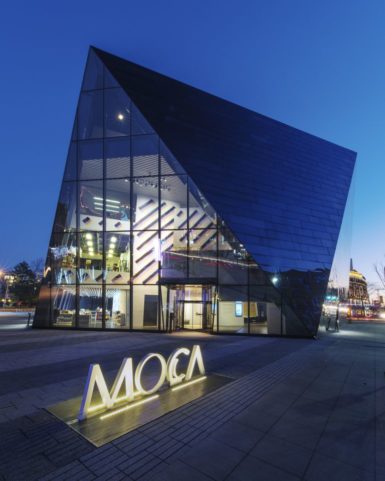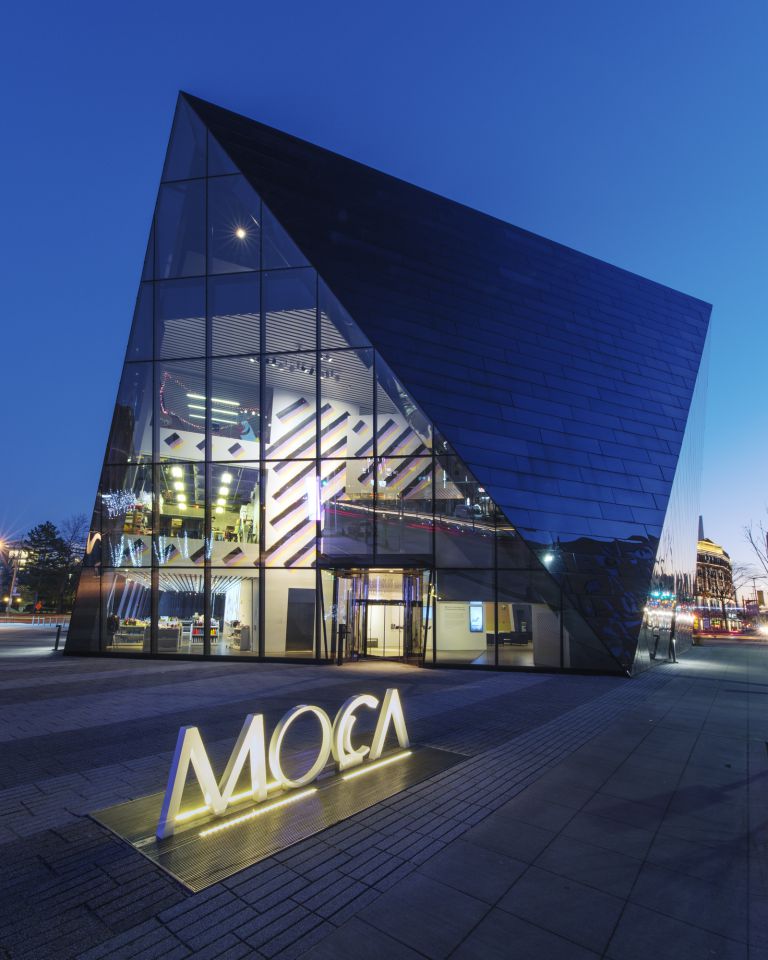[ad_1]

COURTESY MOCA CLEVELAND
If there is one word that has been on the agendas of almost every American art museum in the past few years, it is inclusion: How do institutions make diverse audiences feel welcome? The Museum of Contemporary Art Cleveland today announced a comprehensive plan to infuse inclusiveness into the museum on a structural and programmatic level.
The five components of the initiative, which is called “Open House,” are free admission for all, the creation of a diversity-focused curatorial fellowship (the first recipient is LaTanya Autry, who has held curatorial positions at the Yale University Art Gallery and the Mississippi Museum of Art), an engagement-guide apprenticeship program, enhanced onsite programming for families and teens, and the addition of an education specialist. Free admission begins on March 16.
“We are looking to have inclusion permeate our entire structural and programmatic approach to the museum,” said Jill Snyder, who has led the institution as its Kohl Executive Director since 1996. “We are taking what we hope is a noble approach that has a high quotient of humility, which is that we are really listening to what is going on in our community and looking structurally at our organization, meaning the staffing, the ways in which we are defining visitor engagement, and also through our programmatic choices.”
She added, “I’m not aware of any institution that is approaching this as comprehensively as we are, as simultaneously.”
The museum’s lead investment in “Open House” is the result of being the first recipient of a brand new grant from the Carl & Marilynn Thoma Art Foundation called “Bold Initiatives,” which gives $500,000 over three years to small and mid-sized institutions to enact comprehensive plans that affect outreach, diversity, and inclusion.
“moCa received the inaugural ‘Bold Initiatives’ grant because they demonstrate qualities of leadership we are seeking to support: open, self-critical, and confident to seek input from others,” Carl Thoma said in a statement. “I believe these qualities are essential in achieving an inclusive, accessible, and diverse environment that will attract and engage new audiences.”
One of the components of Open House, the engagement-guide apprenticeship program, which the Thoma Foundation grant is supporting, gets to what Snyder refers to as the integration of “welcoming, collaborative practices into every aspect of our business.” The museum is creating a cohort of 10 to 12 part-time positions, with hiring based on the diversity ratio of Cuyahoga County, and will mentor these hires in visitor services, guarding art, and how to talk about art. It will be designed like a fellowship program, and the hires will be given board mentors and guided as to how they can apply their new skills elsewhere. Snyder describes it as workforce training in the cultural sector.
Snyder said the Open House initiative came out of the moCa 5.0 plan, a three-year initiative the museum began in 2017 to run from the fifth anniversary of its new building, which was completed in 2012 (when moCa relocated to Cleveland’s University Circle district), into 2019, its 50th-anniversary year. The two distinct platforms of the moCa 5.0 plan, Snyder said, are enhancing the museum’s global position and deepening its public value. The plan coincided with the organization of the first Front Triennial, which took place in Cleveland last year.
“We set about defining initiatives moving toward our 50th anniversary in claiming that this idea of a Kunsthalle in the Midwest had a specific meaning,” Snyder said. “And that, globally, a place like Cleveland could have relevance. The Front Triennial took the lead on that—that the issues that come from our region have global relevance, whether racial equity or immigration or issues associated with being an aging industrial city. If we authentically speak to our local issues, they have global relevance. And we saw that with artists, that what they were doing was not mediated through an art-world ecosystem, because we don’t have that here. There is no proliferation of galleries, collectors, and art criticism—those filters. So there is a more direct engagement between artist, museum, and community.”
The museum began a two-year residency for, and a series of Town Hall discussions put on by, For Freedoms, an artist-run initiative founded by Hank Willis Thomas and Eric Gottesman, which is ongoing. The next Town Hall, on May 11, is titled “Love is a Political Act.” Exhibitions opening at moCa this month and next are of Lee Mingwei and Sondra Perry.
After considering its programming with artists as a point of entry for new audiences, Snyder said, the next part of moCa 5.0 was for the museum “to consider itself as an environment and a platform for communication and visitor experience.” There were renovations to the ground floor, and branding projects “to make the museum’s voice more relevant and urgent.” Out of this came Open House, which is meant “to lower barriers to entry and to work on inclusion and accessibility. Even if we get people in the door, how do we make the encounter with new art rewarding?”
As museums push for more diversity and inclusion, more such comprehensive programs may be around the corner, but Snyder acknowledged the challenges of such undertakings. “Many institutions are fearful of doing this because they discover things that are uncomfortable,” she said.
[ad_2]
Source link

